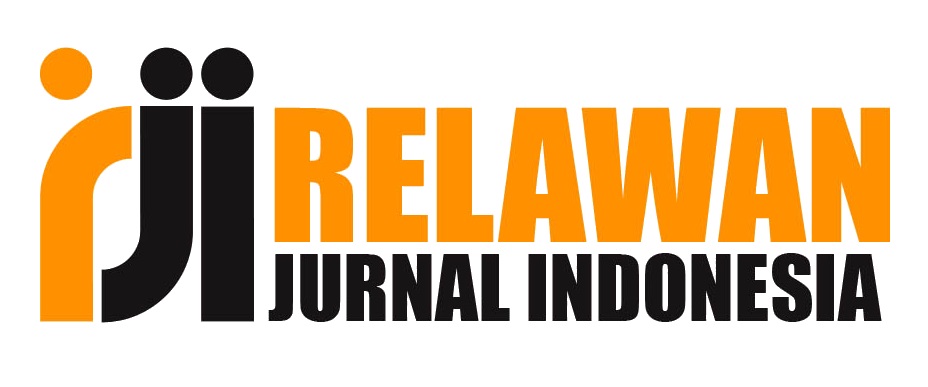ANALISIS DAMPAK LINGKUNGAN TERHADAP KEGIATAN OBJEK WISATA TAMAN PURBAKALA KERAJAAN SRIWIJAYA KOTA PALEMBANG
DOI:
https://doi.org/10.52333/lateral.v3i1.845Keywords:
Tourist Attractions, Environmental Pollution, Surface Water Quality, Air Quality, TrafficAbstract
Tourist attractions have an important role in the economic development of a region, but can also cause negative impacts such as environmental pollution due to operational activities of tourist attractions that invite many visitors which can produce waste. The purpose of this paper is to identify and analyze the environmental impacts that occur due to operational activities of the Sriwijaya Kingdom Archaeological Park in Palembang City. The research method used is survey and observation as well as sampling of ambient water and air quality which will later be analyzed by an accredited laboratory. Furthermore, the data analysis carried out is in the form of descriptive data analysis. The results of testing air and surface water quality samples showed that all parameters tested did not exceed the established environmental quality standards, and the noise level also did not exceed the threshold. For the magnitude of traffic congestion, a V/C value of 0.31 was obtained, which indicates that the traffic flow generated from this activity is a stable flow. Thus, the operational activities of the Sriwijaya Kingdom Archaeological Park tourist attraction do not affect environmental quality, but it is necessary to monitor the water quality around the location of the activity.
References
Wardoyo, W., Aminuddin, K. M., Ramadhani, R., & Meidiani, S. (2022). Kajian Kajian volume lalu lintas di Jl. HM Noerdin dengan membandingkan data pada tahun 2017 dan tahun 2021. TEKNIKA: Jurnal Teknik, 9(1), 75-81.
Ramadhani, R., & Meidiani, S. (2021). Analisis Kondisi Dan Kinerja Lalu Lintas Jalan Mp. Mangkunegara, Kota Palembang. TEKNIKA: Jurnal Teknik, 8(1), 99-106.
Hardiansyah, D., Aminuddin, K. M., Sutejo, Y., & Ramadhani, R. (2024). DAMPAK KEGIATAN OBJEK WISATA MONPERA KOTA PALEMBANG TERHADAP LALU LINTAS SEKITARNYA. Jurnal Teknik Sipil LATERAL, 2(1), 48-55.
Ribawati, E. (2022). Dampak Dan Pengaruh Penetapan Desa Wisata Pantai Anyer Terhadap Kondisi Lingkungan, Ekonomi Dan Sosial Masyarakat (Studi Di Desa Kamasan Kecamatan Cinangka Kabupaten Serang). Estoria: Journal of Social Science and Humanities, 3(1), 366-382.
Sidabutar, D. K., & Hidayat, R. (2023). Pengaruh Pengelolaan Lingkungan dan Kenyamanan terhadap Kepuasan Wisatawan di Kampung Wisata Sawah. Ekonomi, Keuangan, Investasi dan Syariah (EKUITAS), 4(4), 1207-1212.
Nofriya, N., Arbain, A., & Lenggogeni, S. (2019). Dampak lingkungan akibat kegiatan pariwisata di Kota Bukittinggi. Dampak, 16(2), 86-94.
Sudini, L. P., & Arthanaya, I. W. (2022). Pengembangan pariwisata berwawasan pelestarian lingkungan hidup. Jurnal Ilmu Hukum, 18(1), 65-76.
Saputra, H., Safri, M., & Rosyani, R. (2022). Analisis Dampak Pengembangan Pariwisata Danau Sipin Terhadap Ekonomi, Sosial dan Lingkungan di Kota Jambi . Jurnal Pembangunan Berkelanjutan, 5(2), 52 - 63. https://doi.org/10.22437/jpb.v5i1.21197.
Jimmyanto, H., Zahri, I., & Dahlan, M. (2017). Analisis Perilaku Pengelolaan Sampah Padat Rumah Tangga Di Kota Palembang. Demography Journal Of Sriwijaya (DeJoS), 1(1), 8-13. Retrieved from http://ejournal-pps.unsri.ac.id/index.php/dejos/article/view/18.
Firda, A., Akhirini, & Permatasari, R. (2024). Analisis Produktivitas Alat Berat dalam Pengelolaan Sampah di Kecamatan Sukarami Kota Palembang: Analysis of Heavy Equipment Productivity in Waste Management in Sukarami District, Palembang City. Cantilever: Jurnal Penelitian Dan Kajian Bidang Teknik Sipil, 13(1), 23-30. https://doi.org/10.35139/cantilever.v13i1.270.
Nirmala, I. G. A. A. N., Subadra, I. N., & Putra, P. G. P. (2024). Dampak Pengembangan Desa Wisata Terhadap Lingkungan Sosial Budaya Dan Ekonomi Di Desa Wisata Penglipuran. Jurnal Daya Tarik Wisata, 6(1), 8-21.
Agumdhana, R. (2022). Faktor Sosial Ekonomi Masyarakat dan Lingkungan yang Berperan Dalam Agrowisata. Jurnal Pengabdian Magister Pendidikan IPA, 5(2), 305-312.











